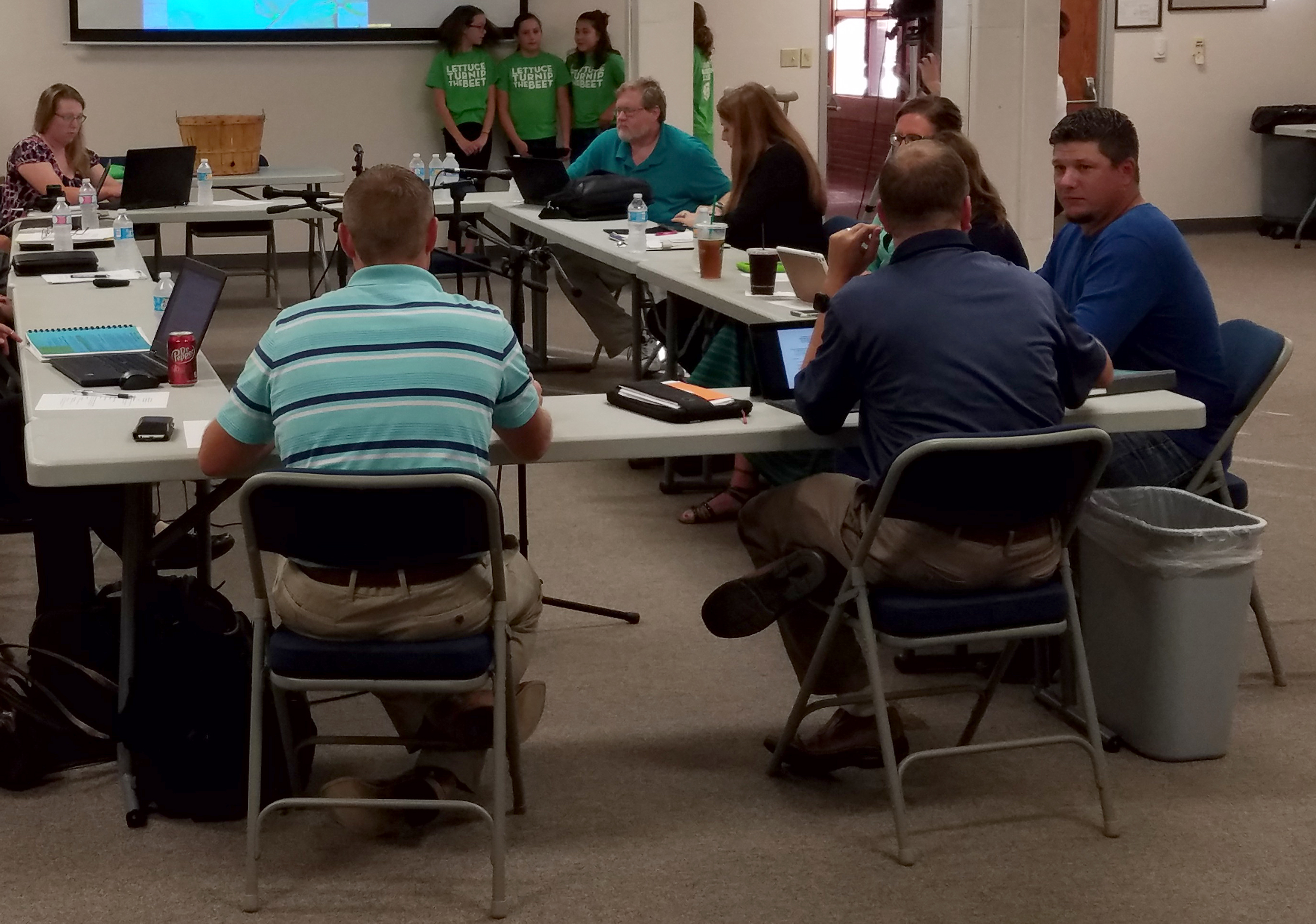Video courtesy USD 489 News
By JAMES BELL
Hays Post
During Monday night’s Hays USD 489 Board of Education work session and meeting, thoughts on long-term thinking about facility needs were presented to the board by the district’s administration.
While Superintendent John Thissen was ready to begin sharing information, he also told the board this is the very front end of the conversation that needs to be held between the board, community and administration.
But he also warned that the groups should not wait too long, telling board members they should begin to deliberate on a time frame for the next bond election and work to gather community input as well as let the community know – while not highly visible – the board is working on facility concerns.
As part of the next step, Thissen suggested to the board they look at an architecture firm that has a proven track record in guiding successful bond elections, suggesting there was some dissatisfaction with the last bond election and it might be prudent for the board to consider a change.
HTK architects worked with the board last year during an unsuccessful bond campaign and had been working with the district for the last eight years, according to Thissen.
Three firms were identified that Thissen found other districts cited in their successful bond elections.
“They’re the experts,” he said of the firms that could run a full bond election. “They know what’s going on.”
Thissen also suggested the board proceed with a construction manager at risk process, which would allow a professional to oversee the project.
“Under the circumstances, there is a great desire to do that,” he said.
While Thissen suggested the board begin thinking about the subject, he also said the board has time to consider the best way to proceed.
“We are still on the front end of this, we have options,” he said.
Outside of the direct bond issue planning, changes to Head Start could force the construction issue.
Thissen informed the board the program is expanding to a full-time program across the nation. This would create a situation where more students are under the district’s care at one time. Students in the program are currently in smaller blocks of time that rotate through the day.
The question now, Thissen said is, “do we have the room?”
Right now, the district can support the student load, but when students in the program go to a six-hour day, the district might be scrambling for space, unless facility space is found or created, or students are cut from Head Start.
Thissen told the board he felt the community would not be supportive of any cuts to the number of students enrolled in the program and, if planning begins now, a solution could be found before the programs changes in the next few years.
He also noted a successful bond issue may address that specific space concern.
In the same vein of building maintenance, Thissen brought to the board an idea that might help with aging equipment and how the district handles replacing systems.
“It’s very important for this district, with this board, to have a plan in place,” he said.
One of the biggest problems he identified is the way problems are identified as individuals may perceive problems directly in line with their building are more important than if viewed from an objective lens.
He suggested a software program to the board that may help create a more objective view. The software would keep a running tab on all district equipment, giving the board a long view of projects that need to be addressed, allowing for better planning to occur.
Thissen noted the software was similar to the plan implemented for district vehicles years ago.
As an example of the need to collect and analyze district equipment and be more proactive is the $1.3 million HVAC system replacement at Hays Middle School. He said it was “troublesome” that he believes the public was unaware that system was 50 years old at the time of its replacement.
“There is no irresponsibility as far as maintenance in the district,” Thissen said. “We are getting every bit out of these systems.”
If there were to be a critique of the district’s maintenance, he said, it would be that there is no plan to replace aging systems in an organized manner.
Implementing this software would also allow the district to make a better case for a future bond, as it would help demonstrate efficiencies that newer systems would create. It would also show the difference in price between new construction and system replacement over time.
For now, Thissen is asking for two or three board members to look at the software, before bringing to the whole board.
“The objectivity really is an important part of this,” Thissen said.
